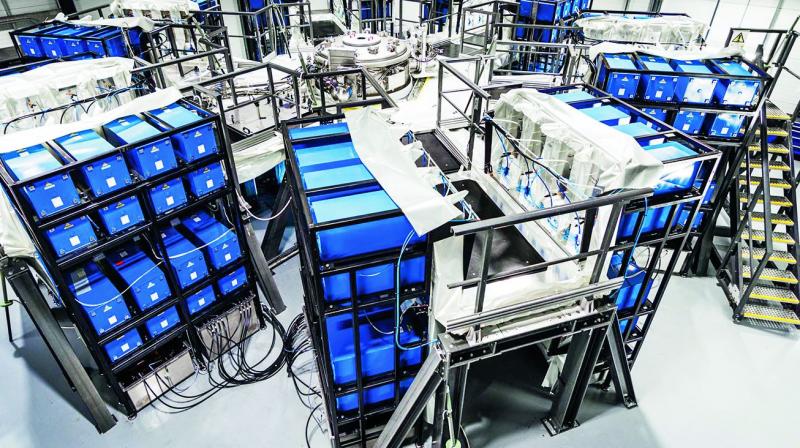Renewables seen leaving a huge gap in power market

Vienna: The world needs explosive growth in renewable energy for the next three decades, but even that probably won't be enough to forestall catastrophic climate change.
That's the conclusion of study commissioned by First Light Fusion Ltd., the British start-up that's building a machine to mimic the power that makes stars shine. With greenhouse gases accumulating at record rates in the atmosphere, researchers at SystemIQ wrote that entirely new zero-carbon technologies will be needed to avert the rising seas, superstorms and famines predicted by runaway global warming.
"We need to continue building renewables at the maximum possible rate, but if we're going to solve the problem we need new technologies," First Light Co-Founder and Chief Executive Officer Nicholas Hawker said in an interview. His company near Oxford University has drawn investments from IP Group and has an advisory board that includes former US Energy Secretary Steven Chu.
Pressure to adopt cleaner power is intensifying. A series of reports showed that efforts, while substantial, are still far short of what's needed to keep climate change in check. At current rates, temperatures will rise at least 3-degrees celsius (5.4-degrees fahrenheit) by the end of the century, missing by a wide margin the 2015 commitments made under the Paris Agreement.
"Within the next two decades, we have to simultaneously replace current power generation from coal, natural gas and oil with zero-carbon sources, while doubling the existing output of electricity using, again, zero-carbon power sources," according to the study.
Wind and solar power are set to increase the amount of power they supply eightfold over the next two decades. Even so, that would leave the world with a potential electricity shortfall as great as 20,000 terrawatt-hours, almost as much electricity as the entire world uses each year.
"One consequences is a proliferation of private fusion companies," said Tim Bestwick, the Director of Business and Innovation at the UK's Atomic Energy Authority. "There is un-dou-btedly scope for high degree of innovation in the field."
The electricity gap that needs to be filled is the target of First Light, as well as competing fusion start-ups being funded by Jeff Bezos, Bill Gates and Peter Thiel. They're pursuing designs they hope can start generating power sooner than the 35-nation, $25 billion Tokamak fusion reactor known as ITER, the largest research project in history, whose collaborators have been laboring on a gigantic demonstration reactor in France since 2010.
"The internal tension in the field of fusion comes down to size," according to Hawker, who said that bigger machines, in which plasma reactions can be more easily be calibrated, also cost more for investors. "We want a design that will reduce the upfront capital costs."
The SystemIQ study assesses that "if fusion can be delivered at $60 a megawatt-hour, the addressable market could be about 460 gigawatts globally." Countries with limited space and poor solar conditions like the UK, as well as places with rapidly expanding power grids like India are ideally suited for fusion, according to the confidential report that were shared with Bloomberg News.

